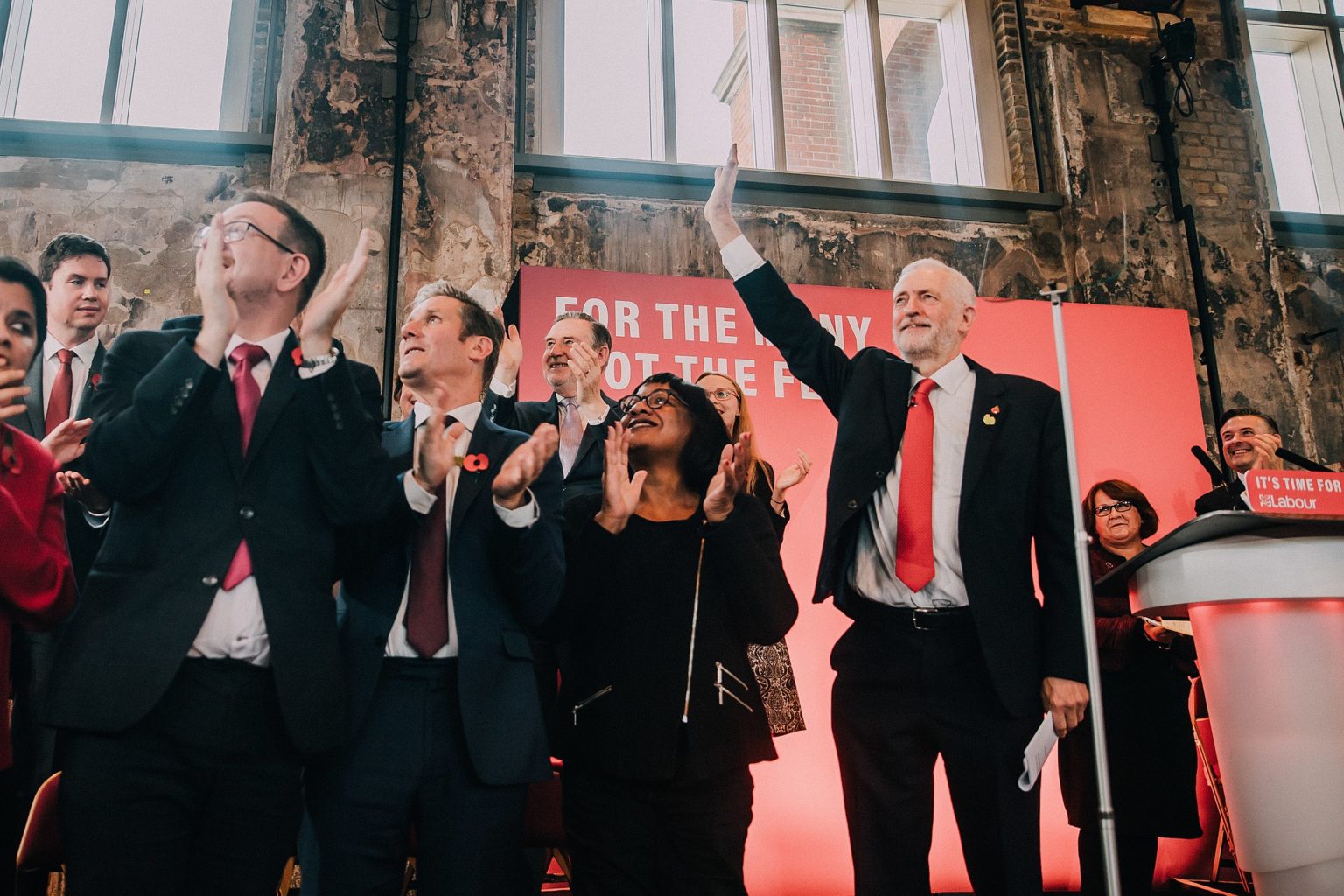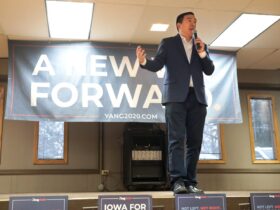This article originally appeared on Alexei Arora’s personal Substack. It has been lightly edited for grammar and style.
As council elections take place in the UK, one by-election in a Parliament seat has caught everyone’s eye. Hartlepool, a working-class Red Wall constituency that has never voted Conservative, elected a Conservative candidate for the first time. For those that have been following UK politics at least since the Corbyn era, if not before, this result was certainly interesting, but it wasn’t shocking.
Ever since the election of Tony Blair as Prime Minister, Labour has witnessed a decline in the share of working-class voters. While those in the far-left of the party may mock current leader Keir Starmer, and those on the center to right of the party may mock Corbynites, the fact is that this trend is structural and long in the making. Every single leader from Tony Blair to Keir Starmer is to blame.
To understand this trend, let’s look at how Tony Blair won in 1997 after an 18-year Conservative party spell.
Tony Blair, Gordon Brown and New Labour (1997-2010)
Margaret Thatcher was elected the Conservative Prime Minister in 1979, and she was responsible for the introduction of neoliberal economics in the UK. Her policies sought to weaken trade unions, deregulate markets, lower taxes, reduce deficit spending, and offshore industries to the developing world. In 1992, John Major succeeded her as the Conservative Prime Minister.
Meanwhile, Tony Blair was elected as the leader of the Labour Party in the 1994 leadership election. Here, he rebranded the party as “New Labour” in an attempt to distance it from its focus on labor and trade-union issues, and instead to “modernize” the party. His key policy change was dropping Clause IV of the Labour Party constitution (a commitment to nationalizing the means of production, a key pillar of Socialism).
Blair further embraced the “Third Way” doctrine (not to be confused with the Hindu “Third Way” economics that calls for worker cooperatives) which sought to combine mild Thatcherite center-right economics, with center-left social policies such as a vague commitment to “social justice.” In other words, there was no commitment to public-sector provision of goods—instead there was a focus on more non-profit and private-sector alternatives, something much to the right of traditional Labour values. This was done in an attempt to gain ground with the financial elite in the cities, by proving to them that Labour had fiscal prudence.
Come 1997, New Labour defeated the Conservative party by winning 418 seats in the 659-seat parliament; a majority of 88 seats. Margaret Thatcher in 2002 said her greatest achievement was “Tony Blair and New Labour. We forced our opponents to change their minds.” Labour did this by retaining its working-class voters while also appealing to the Professional Managerial Class (PMC) as it won 39 percent of its vote-share.
Below is a map of Tony Blair’s 1997 electoral win. I have highlighted the key areas Blair won (descending order, clockwise from top): Scotland, the North East, the Red Wall, London and its surrounding areas, and South Wales.
While showing his support for British patriotism, Blair also introduced a National Minimum Wage, increased real investment in education, and raised some benefits. However, there were some things he did during his 10-year tenure that slowly alienated working-class voters.
For example, Blair increased immigration into the UK at record numbers. When elected in 1997, the UK accepted 48,000 immigrants per year. When Blair resigned in 2007, that number was up almost six times, to 273,000 immigrants per year. As jobs continued to be offshored, employers transitioned to using underpaid immigrant labor. Blair also intervened in the Kosovo War, the Afghanistan War, and lastly, the illegal Iraq War. He also devolved the Scottish and Welsh parliaments, which helped pave the way for the Scottish National Party (SNP) to take over Labour seats in the future. As Labour began taking its working-class voters for granted, it began to rely more on the cities which agreed with more socially liberal, pro-immigration and neoliberal policies.
In 2001, Blair lost just 6 seats to win a second majority (after which he started his Afghanistan and Iraq wars). In 2005, Blair won his third straight majority but lost 48 seats in the process. Labour were at 355 seats when he resigned in 2007, allowing for Gordon Brown to take over as leader and Prime Minister.
Brown, who was Blair’s former chancellor, had refused to regulate the banking industry as they sought their votes during the New Labour era. Offshoring of industrial jobs continued, while Brown was committed to Blair’s goal of having 50 percent of the UK’s youth becoming university graduates (a recipe for elite overproduction). As Chancellor, Brown had also intensified his involvement in the European Union’s Maastricht Treaty, which enforced neoliberal economics on member states. According to this treaty, strict inflation controls and hard caps on budget deficits were to be implemented, which hindered government involvement in the economy. This limited redistribution, nationalizations, and even stimulus.
Then the 2008 financial crisis occurred. Down went the economy, and down went the job prospects of a swelling professional class. As the 2010 election loomed, Brown also called an old Labour-voting woman “bigoted” on his tour, sending his chances of victory crashing.
This sentiment reflected a growing schism between Labour’s professional-class voters and working-class voters—who had diametrically opposing cultural views—which was only to accelerate. Nonetheless, David Cameron’s Conservative party won 306 seats and formed a coalition with the Liberal Democrats as Labour was out of power after 13 years. Below is a map of Labour’s performance from 2001 to 2010. Pay special attention to the Red Wall working-class constituencies highlighted with a crimson rectangle:
After his loss in 2010, Gordon Brown resigned and new leadership elections were called. Ed Miliband ran against his own brother David Miliband and won.
During the non-election period from 2011 to 2014, Miliband became the first Labour leader to address the Miners’ Gala in 23 years. He supported David Cameron’s call for a 2011 military intervention against Libya’s Muammar Gaddafi (the rationale for which we now know was based on lies). In 2013, he rejected a call for a referendum on Britain’s membership in the EU. But things actually started to go south when, after the 2011 recession (and in the midst of neoliberal fear mongering), Miliband could not address the issue of budget deficits. Initially nobody was sure if he was going to attack the Tories on the deficit being “overhyped,” or claiming that he would cut the deficit quicker than them. Miliband later decided to touch Keynesian territory by supporting more borrowing, but in his 2015 election manifesto said that he would not borrow.
Then in 2014, the European elections emerged. Miliband hired former US President Obama’s campaign manager David Axelrod, who said that Miliband had no coherent vision for his campaign to address the white working-class voters fleeing his party besides the name “One Nation Labour.” Labour lost the European elections to Nigel Farage’s Euro-skeptic United Kingdom Independence Party (UKIP).
At this point in time Labour were fairly close to the Tories in polls but still trailed, suggesting a hung parliament. But the Tories came up with a brilliant tactic: if Labour won a minority government, they would form a coalition with the ascendent SNP. The SNP had won a majority in the 2011 Scottish parliamentary elections as the dominant Liberal Democrats were too tainted with their association with the Conservatives, and Scottish Labour could not inspire voters. The SNP also announced its support for an independence referendum. While the 2014 independence referendum failed with only 44.7 percent of Scots voting “Yes,” it resulted in the rise of current leader Nicola Sturgeon and a surge in party membership from 23,000 to 92,000.
Labour focus groups did not believe Miliband’s word on not forming a government with the SNP, working-class voters fled to Nigel Farage’s UKIP, and the SNP solidified their hold on Scotland. The ghosts of Gordon Brown’s economic mismanagement haunted his chances and, with an uninspiring campaign to top it off, disaster was only waiting to happen for Miliband. In 2015, Labour lost 26 seats (dropping to a low of 232) and the Liberal Democrats were thoroughly decimated. While SNP bagged an astonishing 56 seats just out of Scotland, the Tories just edged to a majority with 330.
Here’s a map comparing 2010 under Gordon Brown and 2015 under Ed Miliband. As Scottish voters migrated to the SNP, and UKIP started to gain ground in the industrial Red Wall seats (although Labour retained them with thinner margins), Labour made gains in London as they went from 39 to 45 seats out of 73.
After Miliband’s humiliating loss, Jeremy Corbyn announced his intention to run on an outright left-wing platform in an effort to break away from the Blairism of the Labour right. He won the leadership election in the first round with the “largest mandate ever won by a party leader.”
He faced an uphill challenge as his proposals, such as withdrawing from NATO, received flak from military leaders. Negative and false press coverage continued. One study by the London School of Economics suggested that 75 percent of articles about Corbyn failed to represent his actual views.
In 2016, the Brexit referendum occurred while Corbyn went on a holiday during the campaigning season. While hailing from the famous socialist and Euro-skeptic traditions of Tony Benn, Corbyn had brought in swathes of new members into the Labour Party that were young, college-educated, and metropolitan. Much like the working class, this group had not recovered from the 2008 and 2011 downturns, but unlike the working class this group consisted of aspiring-elites who shared socially liberal policies. Hence, while they were perhaps equal or more socially liberal than the Blairites, they were more economically left-wing.
As Labour increasingly became a more socially-liberal, Blairite party that had earlier pushed for greater inclusion in the EU, backing the “Remain” vote reflected not only the class interests of the financial elite and Blairites, but also of the aspiring-elite educated voters that Corbyn had brought into the fold. Both would benefit from free movement and both increasingly saw their identity as cosmopolitan & European—not British.
As Britain ultimately voted to Leave, Corbyn decided that he would respect the result of the referendum. This led to 21 shadow cabinet members resigning, and the loss of his party’s leadership confidence in a vote of 172-40. Here, Conservative PM David Cameron also resigned (as the result didn’t go the way he had hoped), and was replaced by Theresa May.
Another leadership election was triggered in 2016, which Corbyn managed to win again. This was due to the influx of young voters that flocked to the party. Corbyn then ordered a whip on the Brexit vote in parliament to initiate the withdrawal process, but 47 Labour MPs defied it. Meanwhile in the 2017 council elections, Labour lost 400 councillors.
Theresa May then called an early general election in 2017 to ensure a “strong and stable” government. She won the election, but to everyone’s shock she couldn’t get her majority because Corbyn delivered a massive surge of not only young, educated voters but also jumped his support amongst the working class in the Red Wall. His policies catered to the professional class, college-educated voters and the working class with policies such as scrapping tuition fees, addressing public sector pay, making housing more affordable, ending austerity, nationalizing the railways and providing school students with free lunches. But even as the SNP lost ground in Scotland, he could not penetrate the region as strongly as Blair had in 1997.
Corbyn improved Labour’s performance in London from 45 to 49 seats. With a 40 percent national vote share (a jump of 9.6 percent), it marked the first gain in seats and electoral votes for Labour since 1997. But he still lost. Not only that, but Conservatives also made inroads into the Midlands and Red Wall seats, picking up 7. Ultimately, Theresa May formed a coalition government with the Northern Irish Democratic Unionist Party.
Below is a map of Corbyn’s 2017 electoral performance. Notice the increase in Red Wall seats, along with small gains in Scotland.
However, with an antisemitism scandal, a hostile party establishment that refused to support Brexit (or much of his left-wing policies), and culturally unpopular policies, Corbyn’s approval rating declined to new lows after the election. The Labour Party called for him to support a “second referendum” (wherein after an exit deal would be negotiated with the EU, voters would have a chance to either accept the deal or remain in the EU). Corbyn vehemently opposed this, but the Labour Party conference adopted a motion in support of it, and some rebel pro-Remain MPs split from the party to form the ChangeUK group. Along with Blairites, some of the most vocal supporters of the second referendum were Guardian columnist Owen Jones, and Ash Sarkar from Novara Media (who ignominiously called Brexit a “culture war” issue).
The Blairites and Corbynistas became two sides of the same coin; one face was the economic side of remain and the other became its cultural face (perhaps a reflection of how woke identity politics only helps reinforce the status quo). Corbyn ultimately caved in and accepted this position. This was in a sharp rebuke to his working-class voters in Red Wall constituencies who had overwhelmingly voted for Brexit. Brexit would give them not only an opportunity to control their migration flows, but would actually allow Corbyn to enact his economic plans that were restricted by the EU’s Maastricht Treaty.
Looking at the graph from the Joseph Rowntree Foundation below, Brexit’s biggest supporters were low-income households, manual workers, the unemployed, non-college educated and older voters. Meanwhile, Brexit was opposed mostly by higher-income households, the professional-class, young voters and college-graduates.
As Theresa May resigned and Boris Johnson became the Prime Minister, he made his intention clear to “get Brexit done” (while calling for reduced regional inequality and supporting British patriotism). With low ratings, an about-face on Brexit, a hostile party, and an antagonistic media, Corbyn was thrashed in the 2019 general election, as Labour showed its worst performance since 1935. (An important point to remember here is that this Tory win was also aided by pro-Brexit Labour voters flocking to Nigel Farage’s new Reform Party which split the Labour vote and helped Boris Johnson win some seats.)
The map below shows grave losses in Scotland, decimation in the North-East, and annihilation in the Red Wall. Losses in the Midlands were also significant, although too small to be seen on this map. Labour only bagged 202 seats as the SNP rose to 48 and Boris Johnson’s Tories won a resounding 365-seat majority. But Corbyn retained a strong 49-seat presence in London, thereby confirming the realignment. In the end, he resigned in shame.
Following Corbyn’s devastating loss, Keir Starmer was elected Labour leader as people hoped he would bring moderation to the party’s far-left turn on (mostly) social and (less so) on economic policies. But while Labour’s economic policies under Corbyn were massively popular, Brexit, infighting, cultural issues, and Corbyn’s own personal unpopularity did not bring in votes.
So what did Starmer do? He returned to unpopular Blairite economics by promising fiscal restraint, while walking a tightrope between supporting British patriotism (which had been taboo under Corbyn) and supporting radical liberal groups like Black Lives Matter. By half-heartedly pandering to moderates and progressives, while showing signs of abandoning popular economic policies, it is no wonder that Starmer (himself a key proponent of the second referendum) has been falling in approval ratings—even as Coronavirus ravaged Britain.
If that wasn’t bad enough, working-class support for the Labour Party (supposedly the party of the working class) dropped drastically as workers migrated to the Conservatives.
The final blow came with the May 6th election in the Red-Wall seat of Hartlepool. This was a seat that even Corbyn retained (in fact, he increased his vote share in this seat compared to Miliband). But under Keir Starmer, the seat went Conservative with a vote-share of a whopping 53 percent.
What’s more, latest polls show that healthcare workers are now trending Conservative. The NHS was the Labour Party’s baby, and now its workers are trending to the right. These voters went 82 percent for Labour in 2019. Within less than two years, they are now 42 percent Conservative.
The Labour Party is no longer the party of the working class. It must first accept this fact before it charts out a path forward. Currently, Labour’s voter base consists of socially liberal, college-educated and professional-class urban voters who hate their country. They consider themselves global citizens rather than British citizens; their cultural policies are at odds with lower and middle-class Brits, and their economic policies assert their class dominance while at best throwing crumbs at workers.
The picture is actually much more simple than what people might want you to think: you cannot win the votes of the working class, or the British people, if you vocally despise both. This would mean acknowledging that New Labour must die for good, and that Ed Miliband, Jeremy Corbyn, and Keir Starmer are its outdated offshoots. The material conditions for that sort of politics are dead, and a new post-neoliberal consensus is needed.
In sum, the Labour Party must radically change to appeal to the cultural and economic policies of the working-class—rather than the professional class—or else it will fade into irrelevance. Either the party can be saved one last time, or it must be abolished to create a new one. Regardless, the status quo only paves the way for its demise.









